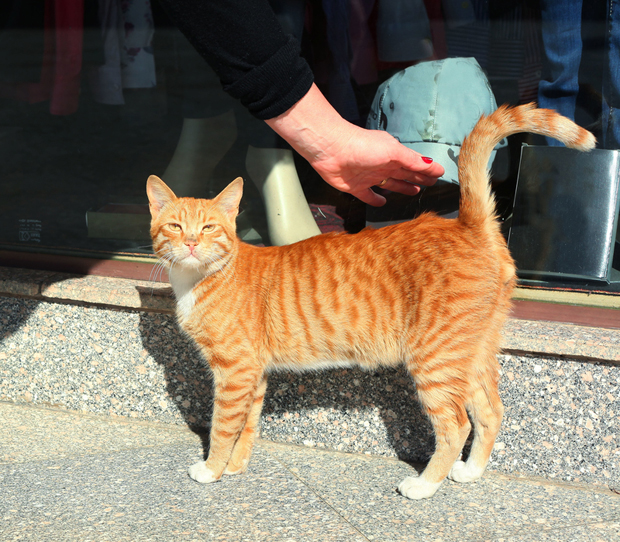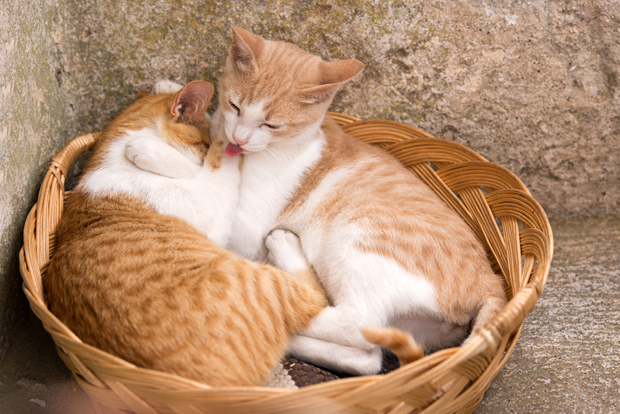
Red classic tabby (looka that face!). All photos courtesy of Dr. Meredith Kennedy, Long Beach Animal Hospital.
They’re often called marmalade, orange, ginger and red, and they’re easily recognizable with their reddish-apricot coat overlaid with striking rust-red markings. About 75 percent of these beautiful cats are male because of the genes and chromosomes the cat has inherited. The red gene is carried on the X chromosome, making red a sex-linked color. Males only have one X chromosome, and so if a male carries the red gene at all, he will be red. Females have two X chromosomes; if both X chromosomes carry the red gene, then that female cat will be red. If a female has red on one chromosome but a different color on the other X chromosome, other coat colors and patterns will also be expressed: black and red (tortoiseshell), red tabby plus brown tabby (“torbie,” or patched tabby), or red, black and white (calico).
The genetic dilution of the red color is cream, which appears as a lighter creamy coat with tan or buff markings rather than red. Some of these cats may appear to be a solid color, but when you look closely, you will see the pale stripes, whorls or spots of the tabby pattern. You will also see the distinctive M on the forehead of both red and cream tabbies, which tends to generate a lot of “M names” for these cats: Morris, Marmalade, Malachi, Macavity, Madison and Macy are popular ones.
Both red and cream come in all four tabby patterns: the mackerel tabby has narrow bands of stripes thought to resemble fish bones; the classic tabby has large whorls, sometimes as a ‘”target” pattern called blotched tabby in the UK; and the spotted tabby is a mackerel pattern with the stripes broken up into spots. The ticked tabby has no real stripes, but each individual hair is ticked with different shades of red and apricot. All red cats will have some tabby markings, even the ticked tabby, which will show ghostlike stripes on the face and legs.

Handsome red mackerel tabby.

Red spotted tabbies, bicolor white (awwwwww!).

Red ticked tabby doesn’t seem too ticked to us—looks pretty mellow, in fact).
Not only are the color and pattern of the red tabby distinctive but they’re also known for their outgoing, alpha-type personalities. They tend to have less inhibition than other cats, so they’re likely to be assertive and friendly, very active and often in the middle of family life. On the flip side, they can be assertive to the point of aggression and may react strongly when annoyed or frightened. There are exceptions, of course, but an interesting observation about the color-dilution cream tabby is that they tend to be quieter and calmer than the reds. Emotions in animals can be related to genetics, and the red tabbies have a tendency for “high fear,” meaning they tend to be very reactive to stimuli, and also “high social,” making them seek out attention and petting.
Of course, they are all still individuals and show all kinds of variations in personality and temperament as a result of genetics, environment, human contact and experience. Gentle handling of young kittens between four and 10 weeks of age helps all types of cats grow up to be good house pets and companions.
You can find out more about cats on the Long Beach Animal Hospital website.

